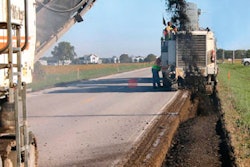Even though the current highway bill (SAFETEA-LU) is not scheduled to expire until September 2009, industry organizations are already preparing for the fight to secure adequate funding levels for the years ahead.
As in past years, leading the charge is the American Road and Transportation Builders Association (ARTBA). Yet, rather than stick with the status quo of pushing for more adequate funding, ARTBA has proposed a more visionary approach. To truly address current shortfalls in federal highway investment, as well as support future economic growth of U.S. commerce, the organization believes the next incarnation of the highway bill should put a more long-term plan in place.
In testimony before the National Surface Transportation and Policy Revenue Study Commission, Charles Potts, ARTBA first vice chairman, presented the concept of "a new 25-year federal initiative focused exclusively on developing the surface transportation capacity necessary to facilitate the secure and efficient movement of freight."
As part of this initiative, ARTBA recommends a federal-aid highway program structure that would include:
• a "Critical Commerce Corridors" (3C) program financed with new, freight-related, dedicated revenue streams that would improve U.S. freight movement and emergency response capabilities; reconstruct and upgrade the current Interstate System; and provide the new capacity and intermodal connections necessary for national and global competitiveness;
• plus augmented investment in the rest of the existing federal-aid "core" highway and transit programs to upgrade and protect the nation's past investments in transportation infrastructure.
The proposed 3C program would be a network of dedicated transportation corridors intended to facilitate more efficient freight movement. The objectives would be to not only improve traffic flow by expanding the current surface transportation system with truck-only lanes, as well as freight rail lines, but also to improve the safety of other motorists by isolating them from heavy transport vehicles.
According to ARTBA, the 3C program would need to have federal oversight, and be supported by a separate user fee financing mechanism. "We believe a clear separation between the 'Critical Commerce Corridors' program and the core highway and transit programs is necessary," Potts stated, "to ensure that strategic new capacity gets added to the national system, and those being asked to financially support the 3C program see their investment being put into the infrastructure they directly benefit from."
Clearly, reauthorizing highway funding legislation in its current format is no more than a short-term fix to a long-term problem. Over the past 25 years, vehicle miles traveled in the United States have doubled, and truck travel has increased at an even faster rate. Yet, lane-mile capacity has increased by only 5.2%. What's worse, freight tonnage shipped by truck is projected to double by 2035.
In order to not only maintain but grow the U.S. highway system, the federal government needs to seriously consider ARTBA's proposal, and we all need to lend our voice of support.



















